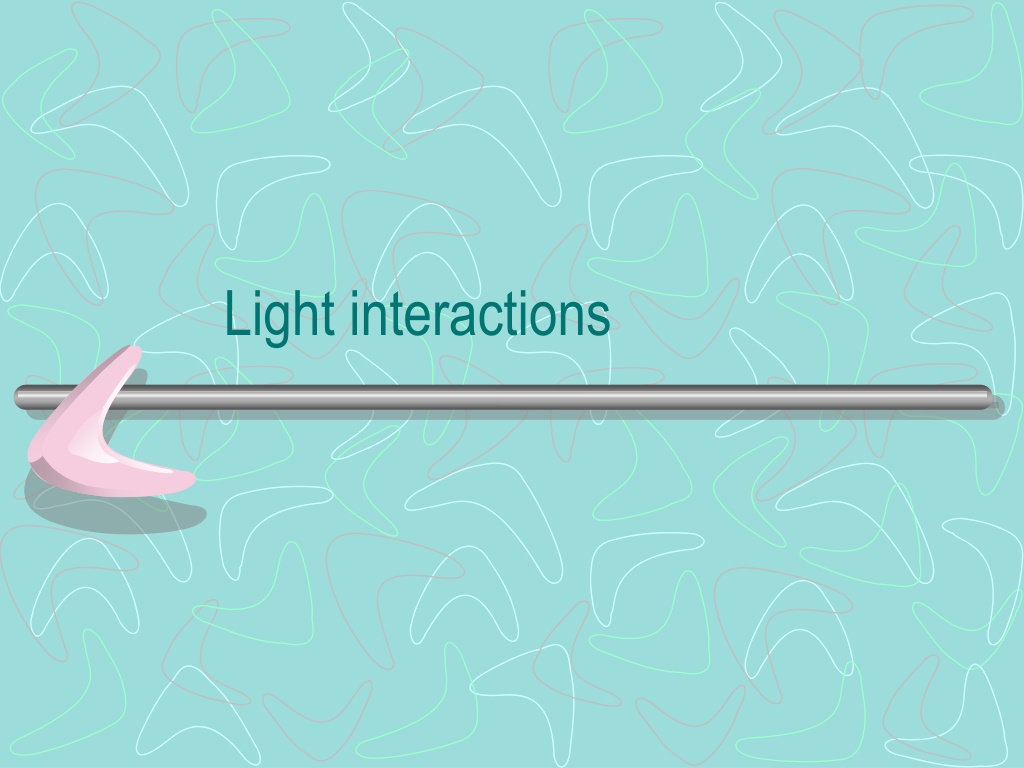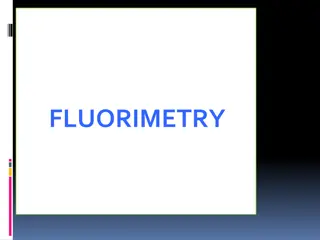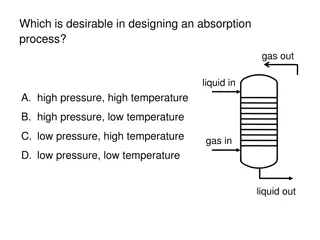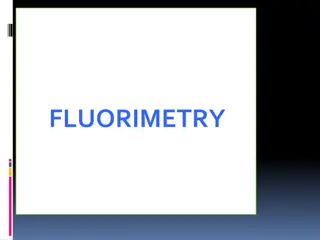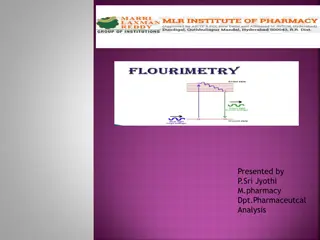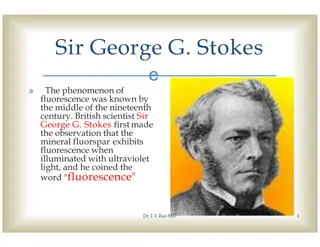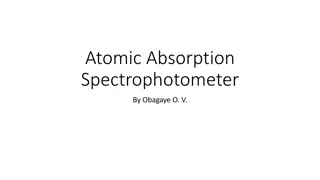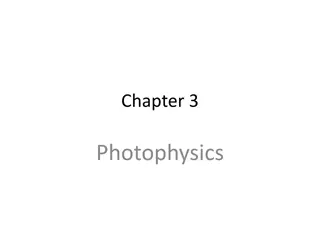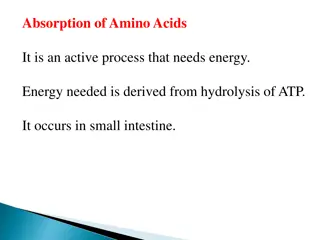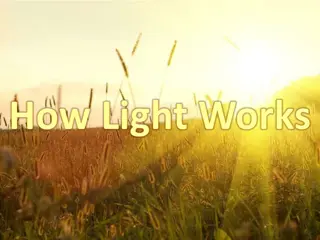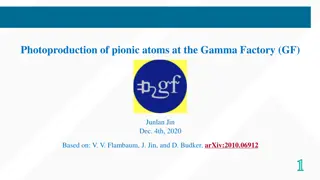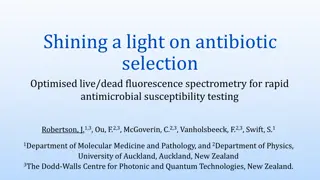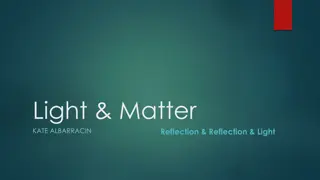Understanding Light Interactions: Reflection, Absorption, and Fluorescence
Explore the fascinating world of light interactions, where light can be reflected, absorbed, or transmitted based on the nature of the object it encounters. Learn about absorption in different materials, fluorescence, phosphorescence, and the concepts of specular and diffuse reflection.
Download Presentation

Please find below an Image/Link to download the presentation.
The content on the website is provided AS IS for your information and personal use only. It may not be sold, licensed, or shared on other websites without obtaining consent from the author. Download presentation by click this link. If you encounter any issues during the download, it is possible that the publisher has removed the file from their server.
E N D
Presentation Transcript
When light strikes another object When light encounters a different medium it can either be reflected, absorbed, or pass through. Most of the time it is some level of each. A blue shirt reflects blue light (and a few others) absorbs all other colors of light and allows small intensities of all colors (white light) to pass through.
Absorption When light is absorbed the light energy is may be converted into heat. Black clothes are warmer because they absorb all colors of light and reflect none Black-the absence of light White clothes are cooler because they reflect all colors, and absorb none. White- all colors of the spectrum
Absorption in certain cases When certain atoms/molecules absorb light energy their electrons jump to a higher unstable energy state. They then release this energy this energy to come back to a stable state. The reemitted energy (EM wave) can have a different frequency than the original energy.
Fluorescence Fluorescence- some type of EM radiation (commonly UV) is absorbed by a substance and visible light is reemitted immediately. Fluorescent light bulbs do this. Ultraviolet light hits the phosphorus coating (white powder), it is absorbed and reemitted as visible light. Several other substances will fluoresce. Which is why certain substances glow in a black light~ (ultraviolet)
Phosphorescent substances When some substances absorb energy they jump to a metastable state. (slightly stable) They slowly reemit the energy (over a few hours). So you can charge the substance in light, they have it reemitted later on. These are called glow in the dark Commonly used on watch faces and toys
What you can see Reflected and Transmitted
What you can see You only see light that hits your eye. You see reflected or transmitted light. You don t see absorbed light.
Reflection Specular Reflection- Reflection off a smooth surface, light keeps a similar pattern. Diffuse Reflection- Reflection off a rough surface, light is scattered.
Images Images are dependent upon the path light can take. If it can all take a similar path an image will be preserved. If the light is scattered (sent in all directions) no image will be seen, just light. (like when light reflects off you)
Scattering of light Why is the sky blue? The best answer is that is not always blue. It is only blue at certain times of day. At noon it tends to be white. The gases in the atmosphere scatter blue light (from the white light that comes from sun). So everywhere you look you see blue light. Sunsets and sunrises are red and purple. Blue light is scattered when it hits the atmosphere, so by the time most light gets to the extremes the blue is gone. Red and violet are at the other ends of the spectrum.
Scattering of sunlight This is not to scale, the sun is larger than the Earth. Night side By the time it gets here all the blue is gone Blue scatters here White light, all colors Clouds and certain gases scatter all light so the sky can appear white Atmosphere
How much light can get through a material Transparent- materials that allow most light and a clear image to pass through are transparent. glass Translucent- materials that allow some light, but light is scatter and no image can be seen. cloudy plastic Opaque- materials that allow almost no light to pass through
Materials Just because a material is transparent or opaque to one thing does not mean it is transparent or opaque to others glass is transparent to visible light, it is opaque to infrared and ultraviolet. Red glass is transparent to red and opaque to other colors
Greenhouse effect ~global warming The atmosphere (or the glass of a greenhouse) is transparent to visible light, so the energy goes right through. The energy is absorbed by the ground and reemitted as infrared light. The infrared is absorbed or reflected back at the ground by the atmosphere/glass. So the energy is trapped as more comes in, so it gets warmer.
Lots of forms of EM waves come from the Sun. Atmosphere The ozone layer is opaque to UV. Night side Only the trapped energy keeps us warm at night! Visible light Ultraviolet light. But it is transparent to visible light, that is absorbed by the surface The heated planet the reemits the energy as infrared, greenhouse gases are opaque to IR light.
How much hotter and colder Without the greenhouse effect we would die!! It would be hotter during the day and colder at night!! The moon is the same distance from the sun as us but without an atmosphere. During the day it gets 130o C on the surface. During the night it gets 170o C.
